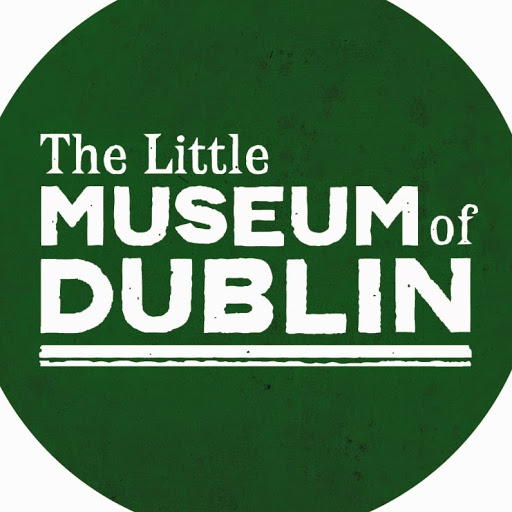
Every Friday afternoon one of the 4 TY classes goes on a Cultural Trip with Ms. McCague and Ms. Dunne. . These trips cover many angles of Dublin's rich history and culture, taking students to places they have not visited previously and encouraging them to get to know both the physical layout of the city as well as Dublin's history. Some examples of the places they visit are listed below as well as a special mention to the three of the more popular/well organised tours that we make sure to go on each module.
Photos from this year's trips can be found in this Flickr gallery. Thank you to the students and teachers who kindly photographed the trips.

Website: http://www.littlemuseum.ie/
"The Little Museum of Dublin is a fabulous place to visit, whether you are a tourist visiting Dublin or a local resident looking for an educational day out. The museum is situated in a Georgian townhouse right in the centre of Dublin city. The collection on display includes art, photography, advertising, letters, postcards, and objects relating to cultural, social and political life in Dublin between the years 1900 and 2000. The collection is mostly comprised of donations and loans from the people of Dublin, so the museum really is a people’s museum! The Little Museum of Dublin tells the story of Dublin city from 1900 up to 2000 and showcases the remarkable transformation that the city went through in the last century. Visitors to the museum will witness the violent birth of the Irish nation, the conservative years that followed the false economic hope of the 1960s and the Celtic Tiger boom of the 1990s. The museum has many artifact’s that attract all kinds of people, from an unopened bottle of lemonade from 1918, The first English edition of Ulysses, a James Joyce death mask, to the old Tram seat from the 1940s". (Family Fun).
Website: http://kilmainhamgaolmuseum.ie/
"Dublin's Kilmainham Gaol held some of the most famous political and military leaders in Irish history such as Robert Emmet, Charles Stewart Parnell, the 1916 Rising leaders and Eamon de Valera. If for no other reason, Kilmainham Gaol in Dublin would be remarkable for being the biggest unoccupied gaol in these islands. As such, it gives the visitor a dramatic and realistic insight into what is was like to have been confined in one of these forbidding bastions of punishment and correction between 1796 when it opened and 1924 when it closed. It offers a panoramic insight into some of the most profound, disturbing and inspirational themes of modern Irish history. Leaders of the rebellions of 1798, 1803, 1848, 1867 and 1916 were detained here. The visit includes a guided tour and exhibition. It is a very busy site and visitors may experience a delay during the summer months. Access is by guided tour only". (Visit Dublin)


Website: http://www.glasnevinmuseum.ie/
"Since 1828, more than 1.5 million people have been interred in Glasnevin - rich and famous, paupers and politicians, artists, warriors and heroes, all resting side by side in this renowned Victorian Garden Cemetery. Established by Daniel O’Connell as a place where people of “all religions and none” could bury their dead with dignity; the cemetery has grown to become a national monument and is a vital part of the Irish Heritage story. Key to Glasnevin’s success is the popularity of the tour guides whose enthusiasm is compelling. Brimming with banter and charm each tour guide is passionate about sharing their love of heritage and history. There is inspiration around every corner and at every grave, and with one and a half million stories buried in Glasnevin, there’s no shortage of tales to tell". (Discover Ireland)